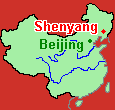
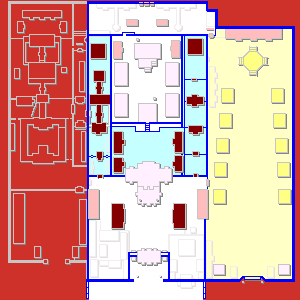
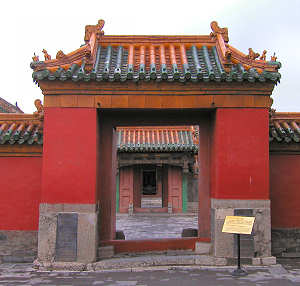
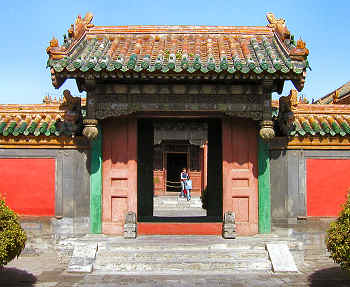
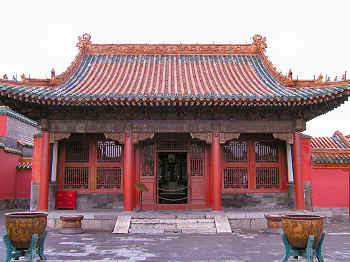
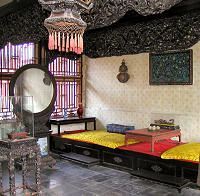
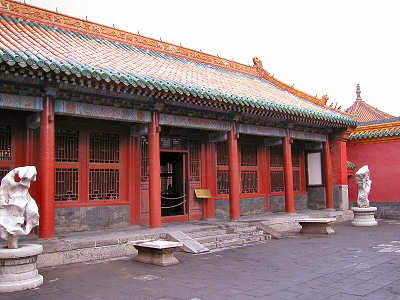
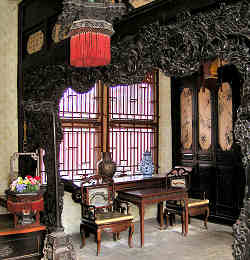
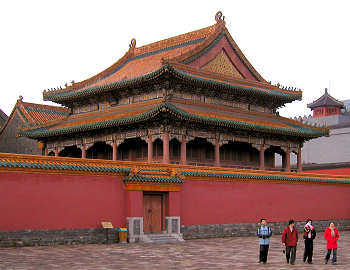
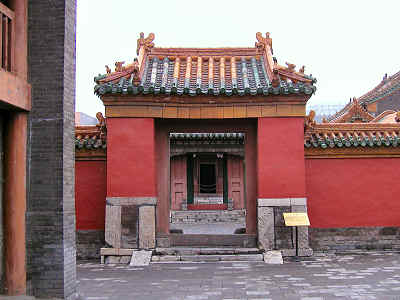
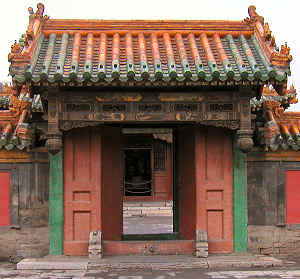
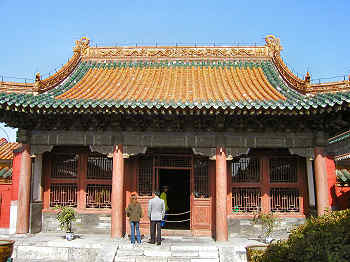
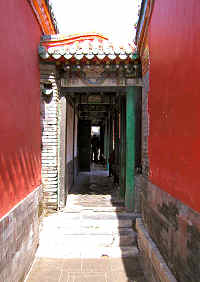
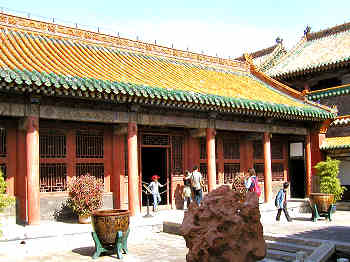
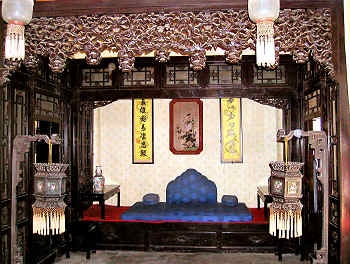
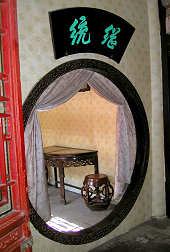
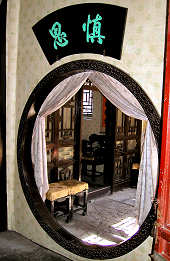
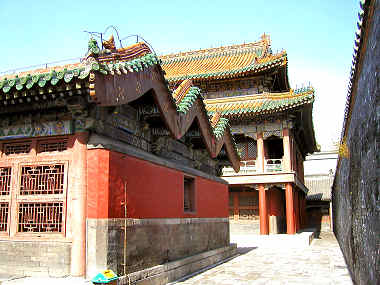
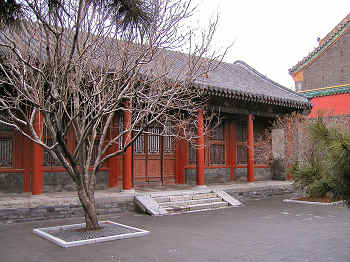
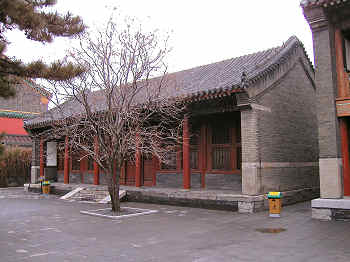
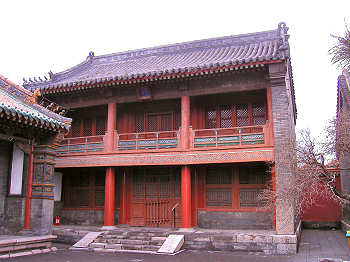
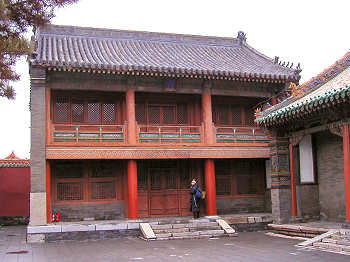
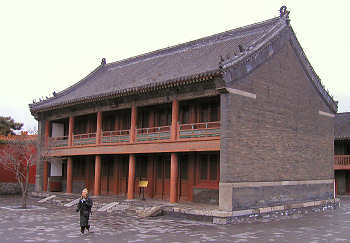
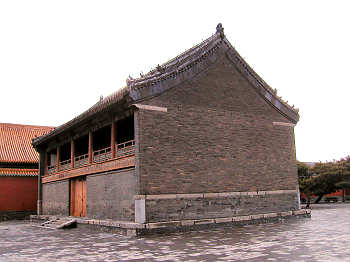


Map of Shenyang Imperial Palace
(Roll over white colored words to locate their reference on the map -roll over symbols on the map to see photos and explanations. Click circle top left to return to main page).
The Additions By Emperor Qianlong 1746-1748
The imperial palace was basically abandoned when Qing in 1644 conquered all of China and moved their capital south to The Forbidden City in Beijing. Some 30 years later emperor Kanxi (1661-1722) instigated "inspection tours" back to Qing's Manchurian homeland and in the process revived the old Shenyang Imperial Palace by using it as temporary residence while on tour.
China entered its last golden imperial period in most of the reign of emperor Qianlong (1736-1795). He embarked upon huge construction programs restoring or rebuilding many palaces and city walls. He resumed the eastern inspection tours and soon realized that Shenyang palace was outdated for the needs of an 18th century emperor.
In his 11th-13th years of reign (1746-1748) he had sub-palaces constructed east and west of the central section. The eastern wing was for the primary use of accompanying dowagers. She rested and received regards from the emperor and empresses in Yihe Hall but resided in Jiezhi Hall. In the rear was Jingdian Pavilion used to store jade volumes, documents and material.
The western wing was for the emperor's use. In Diguang Hall he worked and in Baoji Palace he rested and called subordinates. Further north was Jisi House, a house with 9 rooms, each with its own distinct decoration, where the emperor could enjoy romance with his concubines -each in her own room. Chongmo Pavilion in the rear housed Qing's most treasured historical records.
He also added mansions, Shishan House and Xiezhong House, in which the princes would live and study while on tour. As with Huangtaiji, Qianlong saw the need to erect more storage buildings, Rihuan Tower and Xiaqi Tower in the inner court, and Feilong Pavilion and Xiangfeng Pavilion in the forecourt of the palace.